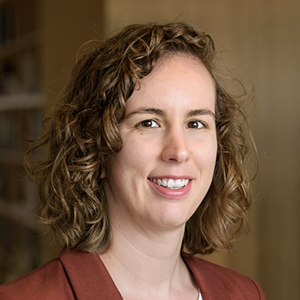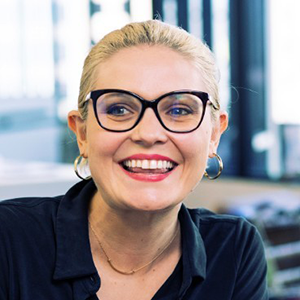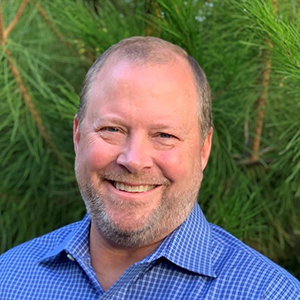What are you and your company doing to help reduce embodied carbon emissions?
Beth Lavelle
Senior Associate, SERA Architects
I grew up in rural Ohio, where my understanding of architecture was very limited and sustainability wasn’t a word in my vocabulary – but I knew enough to recognize that the way my community was developing (like many others) wasn’t headed in a good direction. Midway through my undergraduate degree in architecture, a lightbulb went off for me and the profound social and environmental impacts of the built environment were made clear. Since then I’ve been striving to do more good than bad in my work. My motivations intensified when the birth of my child in late 2015 coincided with “the hottest year on record,” which has been a repeated pattern every year of my child’s life. Their early childhood has been marked by repeated wildfire smoke events, extreme heat waves, record ice storms, and of course the social inequities of our city demonstrated by the steady stream of houseless neighbors coming and going at the end of our block. This shouldn’t be anyone’s “normal.” We can do better, and I’m always striving to do my part to ensure future generations have a livable, equitable planet.
One part of my current role at SERA Architects as Senior Associate and manager of our Sustainable Resources Group is helping to lead reductions in embodied carbon at all scales of projects – from new high-rise multifamily housing projects to small office tenant improvements. We began estimating and tracking the embodied carbon of our entire portfolio in 2020, in addition to our operational energy reporting for the 2030 Challenge. We know we can’t improve what we can’t measure, so wrapping our arms around the entire embodied and operational carbon impact of our work was an important step for us.
Through an integrated design process where analysis is part of the design workflow, SERA teams explore every tool in our toolbox to make embodied carbon reductions possible – existing building reuse, lower cement concrete, mass timber structural systems, deconstruction and material reuse or recycling, etc. While we have a lot of influence as architects and designers, we know we’re only one piece needed to solve this puzzle. We collaborate closely with our engineer, contractor, and manufacturer partners to discover new solutions. We are involved in local advocacy and policy, and are active in peer network groups, like CLF, to drive change and share knowledge. We no longer have the luxury of time to be in competition with our peers (a competitive mindset is what got us all into this mess in the first place!) – collaboration is the way forward.
SERA believes in the transformational power of design, and envision a future that is resilient, equitable, and decarbonized. I’m thrilled to be able to bring my personal passion for sustainability to my work every day. Onward!

Beth Lavelle
“We no longer have the luxury of time to be in competition with our peers (a competitive mindset is what got us all into this mess in the first place!). Collaboration is the way forward.”
What are you and your company doing to help reduce embodied carbon emissions?
Laura Karnath
Senior Technical Designer at Walter P Moore Enclosure Practice
I began my career in architecture during a time of crisis. The Great Recession had just shaken up the AEC industry, leaving recent graduates wondering what our futures would hold and forcing us to be creative in designing our careers. I spent much of my early career as a computational designer, working with parametric models and automation tools to make geometrically complex buildings constructable and to foster collaboration through BIM modeling. It was fascinating and challenging, but I wanted more – I always envisioned my work as a means for building a more just and sustainable world. As architects, we have an important role in addressing the Climate Crisis and I wanted to be part of the solution. Little did I know, the unexpected path I took in my early career laid the foundation for me to do just that.
When I joined Walter P Moore as an enclosure technical designer, my role also included supporting the implementation of digital practice throughout the company. I believed that computational design tools shouldn’t just be the realm of specialists: they had to be accessible to everyone and integrated into every aspect of our practice. Our role in reducing embodied carbon is the same: this work can’t be limited to a few specialists working in small niches within the company. Reducing carbon emissions is something every engineer and designer should be empowered to do as they shape our built environment. As digital practice became fully integrated into our firm, I used my experience in data- driven design practices to dive into carbon tracking and LCA, returning to my passion for sustainable design. The foundational infrastructure of Walter P Moore’s digital practice enabled us to connect project data with environmental impact data to better understand and reduce the impacts of our projects.
In the first year after joining the SE2050 commitment, Walter P Moore set an ambitious target: we would quantify embodied carbon for 50% of our projects by revenue. This goal focused our attention on the biggest projects where we can have the greatest impact on emissions reduction. Through better data, better specifications, and collaboration with architects, contractors, and material suppliers, we are working to radically reduce embodied carbon and transform the way we design and construct the built environment.

Laura Karnath
“Computational design tools shouldn’t just be the realm of specialists: they have to be accessible to everyone and integrated into every aspect of our practice. Our role in reducing embodied carbon is the same: this work can’t be limited to a few specialists working in small niches within the company.”
What are you and your company doing to help reduce embodied carbon emissions?
Kathleen Hetrick
Associate at Buro Happold. Bloomberg MPH Fellow at Johns Hopkins Bloomberg School of Public Health
During the past seven years working as a sustainability consultant and engineer with Buro Happold, I have become deeply acquainted with the relationships between buildings, their supply chains, and their impacts on human health and our worsening climate emergency. The construction industry has the incentives, resources and technical capability to design the environmentally sustainable buildings necessary for meeting our climate goals, but its ability to address human health concerns is woefully undeveloped and reliant on hazardous chemicals and carbon-intensive processes that actually worsen both general public health and environmental justice outcomes. The pollution burden borne by front line communities exposed to the externalities associated with manufacturing building materials and finishes shows the extreme inequalities inherent in our lack of attention to this issue, but no one in society is immune to harmful health effects caused by our collective failure to redesign global construction supply chains to preserve and protect public health.
Consultants, builders, designers and engineers have not yet come to terms with the public health and environmental consequences of the supply chains we rely on, and we continue to overlook the dual threat of public health and climate change on environmental justice communities. The buildings we work on cannot be considered truly sustainable until public health and environmental outcomes are improved across a project’s entire life cycle. We can and we must innovate for bio-based materials to replace our reliance on petrochemical products. We can and we must electrify our construction equipment, utilize sustainable aviation fuel (SAF) and require renewable diesel to lower our A4 and A5 emissions. We can and we must fight for industrial decarbonization processes that invest in environmental justice communities first and foremost. We can and we must procure materials from manufacturers committed making occupational cancer and forced labour a relic of the past. We can and we must cease building solely for unchecked growth and focus on building for best-use: investing heavily in zero-waste construction and adaptive reuse. This is a fight that will take everyone from our corporate clients, academic collaborators, municipal leaders, design teams, contractors, marketing directors, manufacturers, truck drivers, construction workers, and everyone and anyone in between. Whether it’s your Scope 1,2, or 3 carbon, we all have the responsibility and we must all act now. With the passing of the Inflation Reduction Act (IRA), we can no longer blame political inertia and look the other way.
This is personal. And it is personal for everyone in this industry, whether they realize it or not. In my case, there is a potential link between my asthma and my childhood spent in military base housing. My family was exposed to perfluorinated chemicals and other endocrine disrupting chemicals in our drinking water while living on Lackland Airforce base in San Antonio, Texas. My grandfather’s and uncle’s fatal battles with cancer mirror other manufacturing workers’ experiences, as their lives spent manufacturing switch gears and turbines for buildings, ships and power plants likely exposed them to polychlorinated biphenyls and asbestos. Even today, my brother is at risk of suffering from hydrogen cyanide (HCN) gas poisoning from burning building materials through his work as a firefighter.
I have choked on smoke in Los Angeles, CA and have watched Winter Storm Uri wipe out biodiversity at my parent’s home in Bandera, Texas. Zoonotic pandemics spurred on by rampant sprawl, changing climates and habitat destruction transform our cities and lead to millions of deaths we continue to block out from our collective memories. Droughts, heat waves, power failures, floods. So much loss. The overwhelming number of other families that, like mine, have been affected by the building industry’s lack of concern for upstream and downstream issues led me to speak up and consider my future as an advocate not just for action on climate change, but also on public health. I strive to raise the profile of these issues in the construction industry and call for others to join me in solidarity to transform our industry into a force for good. We can build back better.
As a sustainability engineer at Buro Happold, a Johns Hopkins University Bloomberg MPH Fellow, a USGBC-LA Board Member, and one of the founding co-instigators of Carbon Leadership Forum – LA, I aim to do everything in my power to leverage the construction industry’s access to capital, clout, innovation and talent to reengineer the way we build, not just for profit, but for people.
The new IRA is primarily focused on the power sector and transportation sector. We must capitalize on this to push for zero carbon buildings that tackle operational carbon, embodied carbon, environmental justice and public health. Now is the time for the construction industry to stop setting goals and start achieving them.

Kathleen Hetrick
“The new IRA is primarily focused on the power sector and transportation sector. We must capitalize on this to push for zero carbon buildings that tackle operational carbon, embodied carbon, environmental justice and public health. Now is the time for the construction industry to stop setting goals and start achieving them.”
What are you and your company doing to help reduce embodied carbon emissions?
Rob Bolin
Senior Principal, Integral Group
When I watch my son Matthew find new and clever ways to use Legos, Magnetiles or other toy building materials to create, deconstruct (destroy, actually) and then rebuild in new and interesting forms, I am reminded of similar days from my youth of finding random materials and using them in strange ways to create something new. This process of material reuse and the world of efficiency and renewable energy took hold of me at an early stage on my journey through Architectural Engineering programs at the University of Colorado (BS AE) and Penn State University (MS AE) and work within the AEC world. Each step along the way opened up my knowledge of resource efficiency and reuse, an ongoing desire to always learn more, and the importance to always share your knowledge with others through mentorship and training – pay it forward.
As a practicing mechanical engineer in Integral Group’s deep green engineering practice, I have truly found a home of like-minded thinkers and do-ers in reshaping the built environment. At Integral Group, the firm’s DNA revolves around advancing the art and science of designing buildings in a manner that reduces the impact of our environmental handprints and ecological footprint using lifecycle thinking related to the MEP systems we design (or design out of) our buildings. We are able to leverage the best practices and tools developed from around our firm’s Subject Mater Experts, including:
- An embodied carbon calculation methodology (CIBSE TM 65) at product level for mechanical, electrical, public health equipment when no EPDs are available. This enables consistent studies to be done to understand hotspots and key levers.
- A Refrigerants Best Practice Guide to help design teams and engineers mitigate the impact associated with refrigerant. This is the first guide of its kind.
- The Radiant Whole Life Carbon Study, comparing VRF systems and radiant heating in an office building from both an operational and embodied carbon perspective in detail.
- Working with Building Transparency on creating embodied carbon baseline for MEP equipment, to help upskill the industry as a whole.
I am delighted to participate in the MEP 2040 Steering Committee since September 2021, continuing to pay it forward.

Rob Bolin
“When I watch my son Matthew find new and clever ways to use Legos, Magnetiles or other toy building materials to create, deconstruct (destroy, actually) and then rebuild in new and interesting forms, I am reminded of similar days from my youth of finding random materials and using them in strange ways to create something new.”







